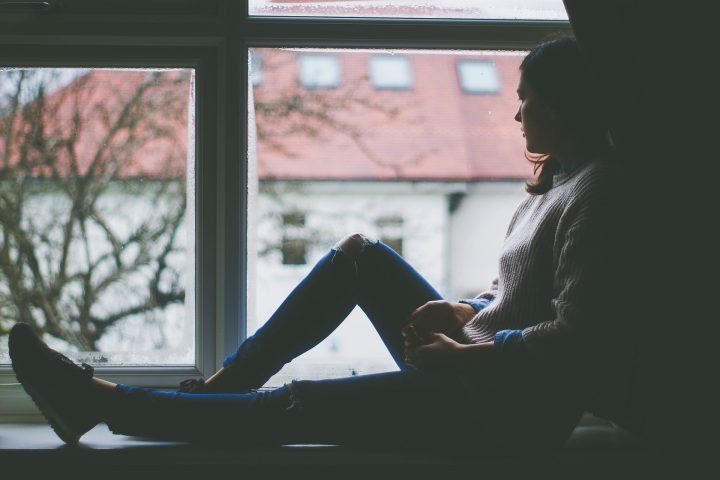Agoraphobia closes doors for sufferers during COVID-19
Odessa Broomes was moderately anxious in public spaces even before the COVID-19 pandemic. However, when Toronto eased its lockdown restrictions in mid-2020, their anxiety worsened significantly.Taking the subway, a mode of transportation Broomes relied upon, felt impossible for months, despite the fact that they were raised in the city. Broomes, a 23-year-old activist who also deals with social phobia, began to suspect their anxiety was developing into full-blown agoraphobia, a fear of being in crowds, on public transit, or in places it’s hard to escape from.
“It’s overwhelming dread,” says Broomes, pausing in frustration during our call as they try to describe the feeling they get when they attempt to leave the house. “It feels like someone is pushing me further and further into a narrow closet… The longer I’m out of touch with society, the harder it is for me to reintegrate. That scares me.”
In early March, colloquial evidence emerged that rates of agoraphobia may be increasing due to the pandemic. Steven Taylor of the University of British Columbia told The Atlantic that his colleagues in Wuhan, China, where the virus originated, “note that some people there now refuse to leave their homes and have developed agoraphobia.” In May, anxiety charities in the United Kingdom that were concerned agoraphobia rates may be on the rise increased helpline hours to offer more support. By August, U.S. researchers published a paper in The Psychiatric Quarterly warning that the coronavirus pandemic may worsen anxiety disorders, including agoraphobia.
Mark Antczak, registered clinical counsellor and clinical educator at Anxiety Canada in Vancouver, has witnessed similar trends in Canada. “Many clinicians have noticed a significant increase in demand for mental health services (waitlists across the board have increased) and more individuals are being diagnosed with not just agoraphobia but with generalized anxiety, health anxiety, and OCD [obsessive-compulsive disorder].”
What’s unclear is whether the health-care sector is ready for this increase in demand. Though the federal government has taken steps to acknowledge the toll the pandemic is taking on Canadians’ mental health through the launch of Wellness Together Canada, a resource-focused website, the mental health-care system has historically struggled to provide Canadians with adequate care. According to a 2013 health report, one-third of Canadians 15 years or older who had a mental health-care need in 2012 did not have their needs fully met.
Melanie McGregor is a health promotion and advancement specialist at the Canadian Mental Health Association’s (CMHA) Halton, Ont., branch, which, since March, has found that 15 percent of people calling in to its free counselling services are reporting concerns specifically related to the pandemic. “Health experts have said that… communities really need to look at some additional resources that they can put in place in order to address the increase in demand,” said McGregor when asked if the province had the resources necessary to deal with an increase in pandemic-related mental health concerns.
Ontario is under a stay-at-home order, and Broomes is back to avoiding the outdoors at all costs, trying to bribe their partner to take on tasks like grocery shopping in exchange for indoor chores like doing the dishes. Even leaving their house to receive an official agoraphobia diagnosis has been too challenging.
“We [equate] these restrictions that are coming up in the second wave [of COVID-19] to what we call, in cognitive behavioural therapy (CBT), safety behaviours,” Antczak said. For people with agoraphobia, that might mean not leaving the house, only leaving home with another person, or not travelling beyond a fixed radius. “These [behaviours] help us in the short-term but they actually end up making the anxiety that fuels all of these disorders a lot stronger.”
People who are now struggling with symptoms of agoraphobia could be experiencing the consequences of using safety behaviours reinforced by public health messaging that the outside world is a scary place, says Antczak. Those who were in treatment before the pandemic are now having to navigate their activities in a COVID-19 restricted world.
In their struggles with agoraphobia, Broomes is worried getting help won’t be as easy as it once was. The thought of going to the Centre of Addiction and Mental Health (CAMH) to seek treatment—a place they used to call their “comfort zone,” and where we first met in group therapy, provokes enough anxiety to keep them away. “I can barely even make it outside to get groceries so how am I going to make it outside [for] therapy?”
Broomes’s best option for help might come through virtual options like the CBT-informed resources Anxiety Canada provides (CBT is also a recommended treatment for agoraphobia) or phone-based support like CMHA Halton offers.
“I really think virtual therapy would be a great option for those of us who find it difficult to leave the house or keep appointments sometimes,” Broomes says. “With the pandemic, it’s shown how many things can be easily done over the phone or online.”
